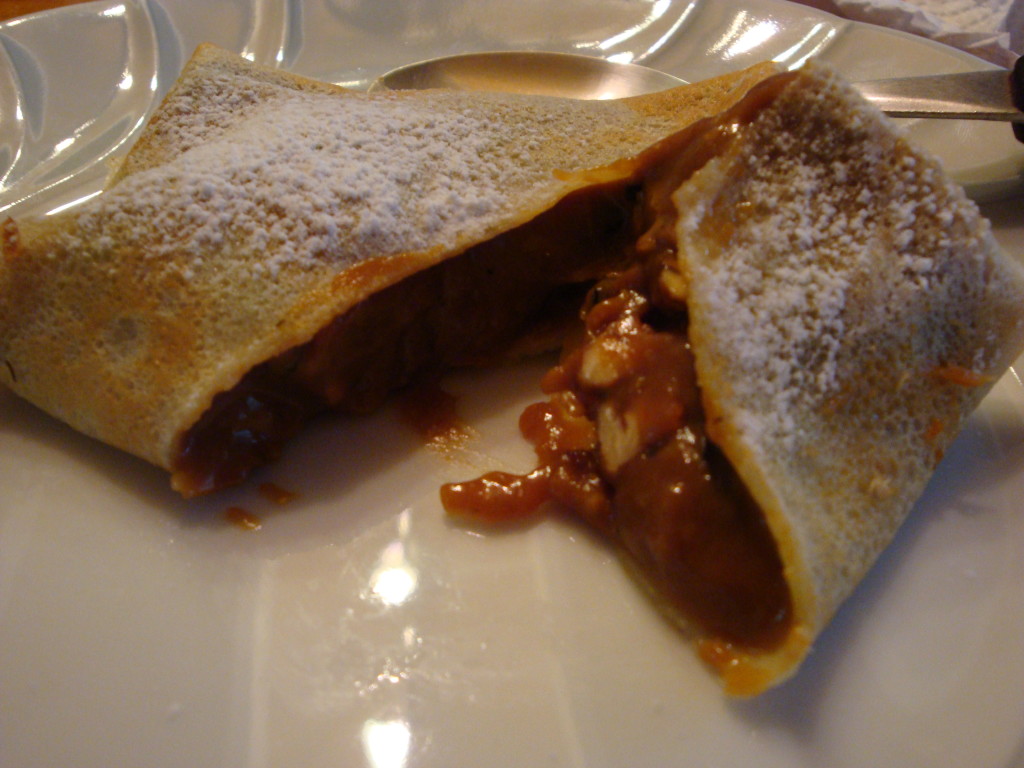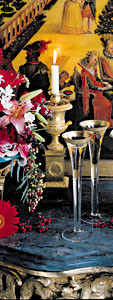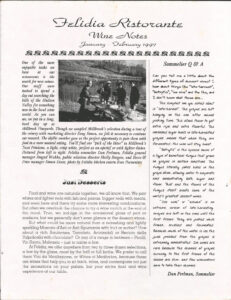False friends
On Sunday supplement
Food and Wine
What’s in a word, you might ask? I’m thinking at the moment of false friends, a.k.a. false cognates – words that seem similar or the same in two languages, but have different meanings. Those of us who spend time learning the local language have discovered a whole world of them. But there’s one in particular that comes to mind today, the pancake. When we look at the local panqueque, we’re not talking about the kind of difference that there is between being embarrassed and being embarazada, an embarrassing mistake indeed.. We’re looking at, to flip the terms around, the difference between an esponjoso and a crepe.
But once you get past the disappointment that your plate isn’t going to be loaded down with a short stack of flapjacks, that puffed cake-y breakfast favorite of North Americans, and realize that you’re dealing with the European derived thin version, you’ll do just fine. What’s particularly interesting is the choice of a name here in Argentina – one might expect derivation from Spanish or Italian culture, but neither the frixuelos or filoas of the former or the crespelle of the latter seem to have made it into the local vernacular.
But, crepes they are, and they’re popular here in two particular forms. First, cooked up as a simple wrap to be used around a savory filling, often bizarre combinations featuring artichoke hearts or hearts of palm or salsa golf or blue cheese or walnuts or any of a variety of options – these are the midday staple of the “ladies who lunch” set, and there are whole restaurants dedicated to serving nothing but these. The second, and more widely seen and sampled, are two favored local desserts, the panqueque de dulce de leche and de manzana – the former generally a crepe wrapped around a whopping scoop of caramelized milk, the latter laid out flat and studded with apples, coated in sugar, and then quickly torched or flamed with rum. They’re also sometimes offered up as canneloni, that’s incorrect – those are made from pasta tubes or rolled lasagna noodles, while the crepe wrapped Italian specialty is called manicotti.
Staying with my false friend assertion, I’m going back to my recent and popular gluten free column – in fact, the only column for which I’ve gotten a flood of e-mailed thanks so far. So how about one of those classic desserts for the gluten free set? With my own take on the dulce filling, though these same crepes are used for savory fillings as well.
Milk Caramel Crepes
160 grams rice flour
4 large eggs
240 ml water or milk
Whisk all three ingredients together and let sit for about 20 minutes before using – this will allow the starch in the flour to rehydrate fully. You want a consistency that’s more or less like warm honey – if you need to, add a little more liquid or flour to achieve that. When ready give it another quick whisk to make sure it’s well mixed, heat a small skillet, omelette or crepe pan over low heat. Drizzle a little cooking oil to coat the bottom and scoop in 60ml of the mixture, swirling or spreading it around the pan evenly. Cook until the upper surface is no longer wet, and if you look, the bottom is lightly golden. Flip out onto the counter to cool. Continue until you’ve used up the batter, 10-12 crepes.
For my take on the dulce de leche filling I put a large scoop of everyone’s favorite milk caramel off-centered on the non-browned side of the crepe, add some toasted pecans and fresh blueberries (or dried ones rehydrated) that have been macerated in liqueur. Then I fold up the closest side to the caramel, fold in the ends, and roll it, like a blintz or a burrito. Line them up on a baking sheet and warm them in the oven for about 10 minutes. Spoon more blueberries over the top and eat with gusto!
A series of recipes and articles that I started writing for the Buenos Aires Herald Sunday supplement, Food & Wine section, at the beginning of 2012. My original proposal to them was to take local favorite dishes and classics and lighten them up for modern day sensibilities. We’re not talking spa or diet recipes, but at the very least, making them healthier in content, particularly salt, fat and portion size. As time went by, that morphed into a recipe column that, while emphasizing food that is relatively “good for you”, wasn’t necessarily focused on local cuisine. At the beginning of 2013 I decided to stop writing for them over some administrative issues, but it was fun while it lasted.


